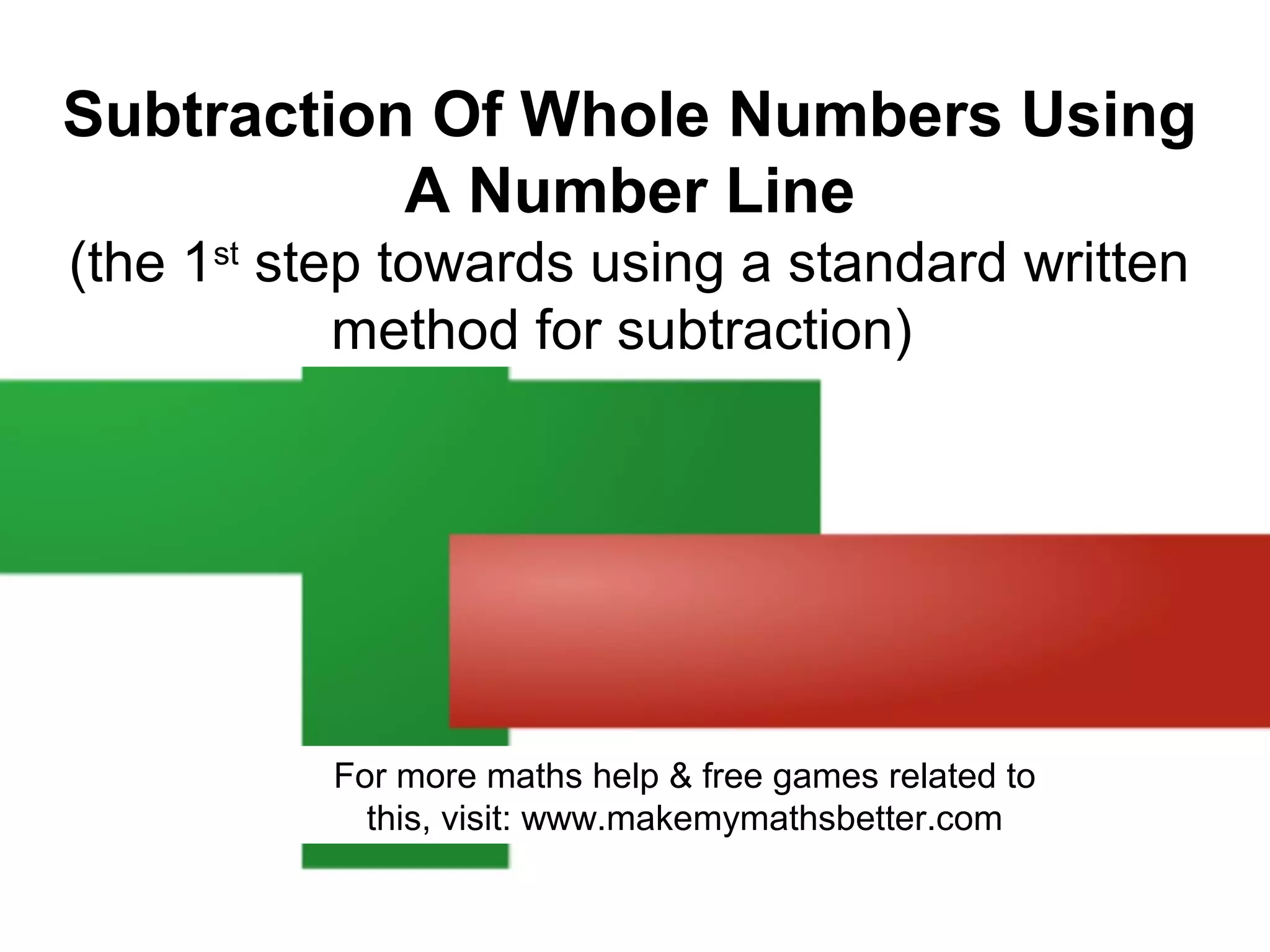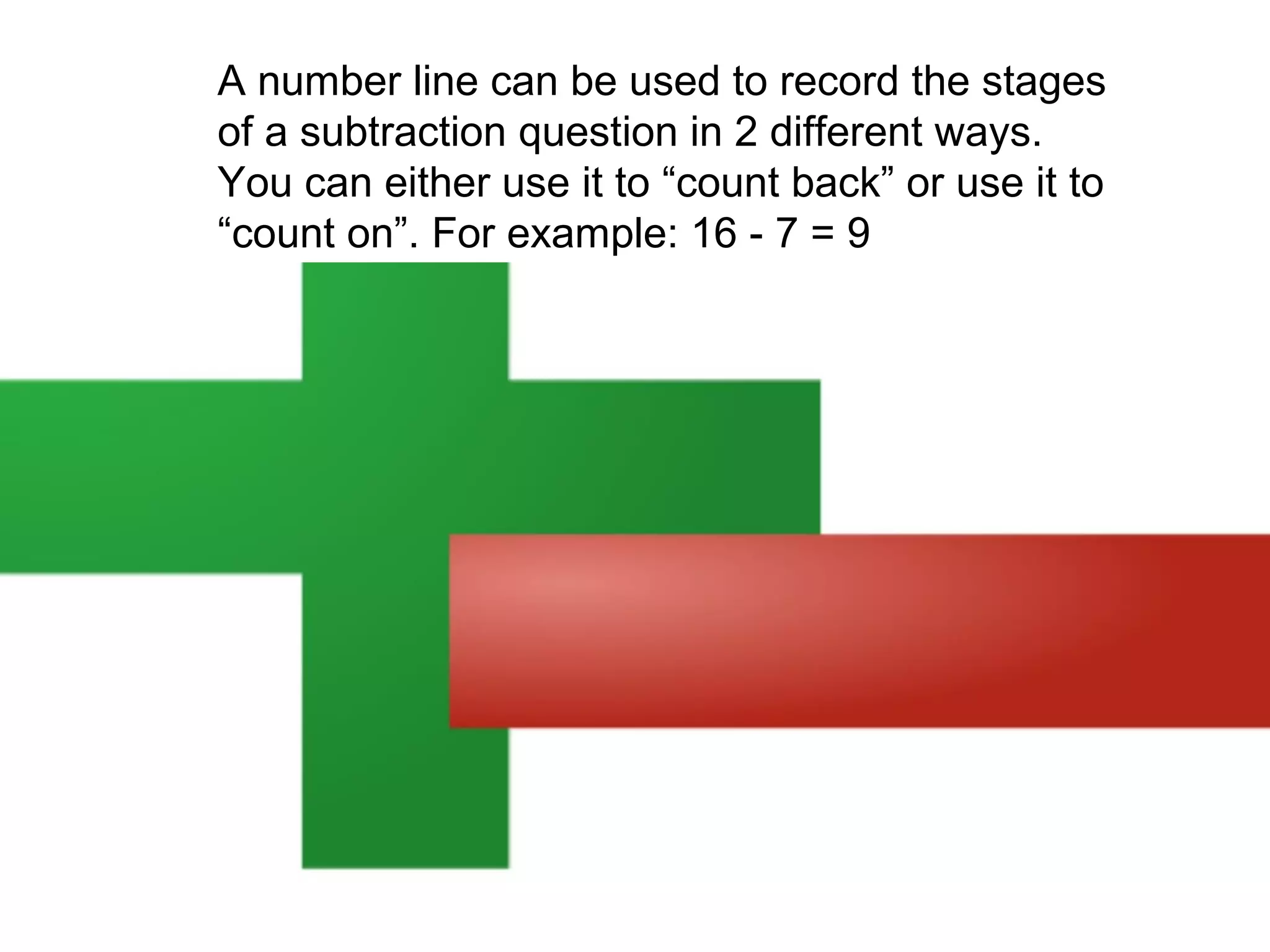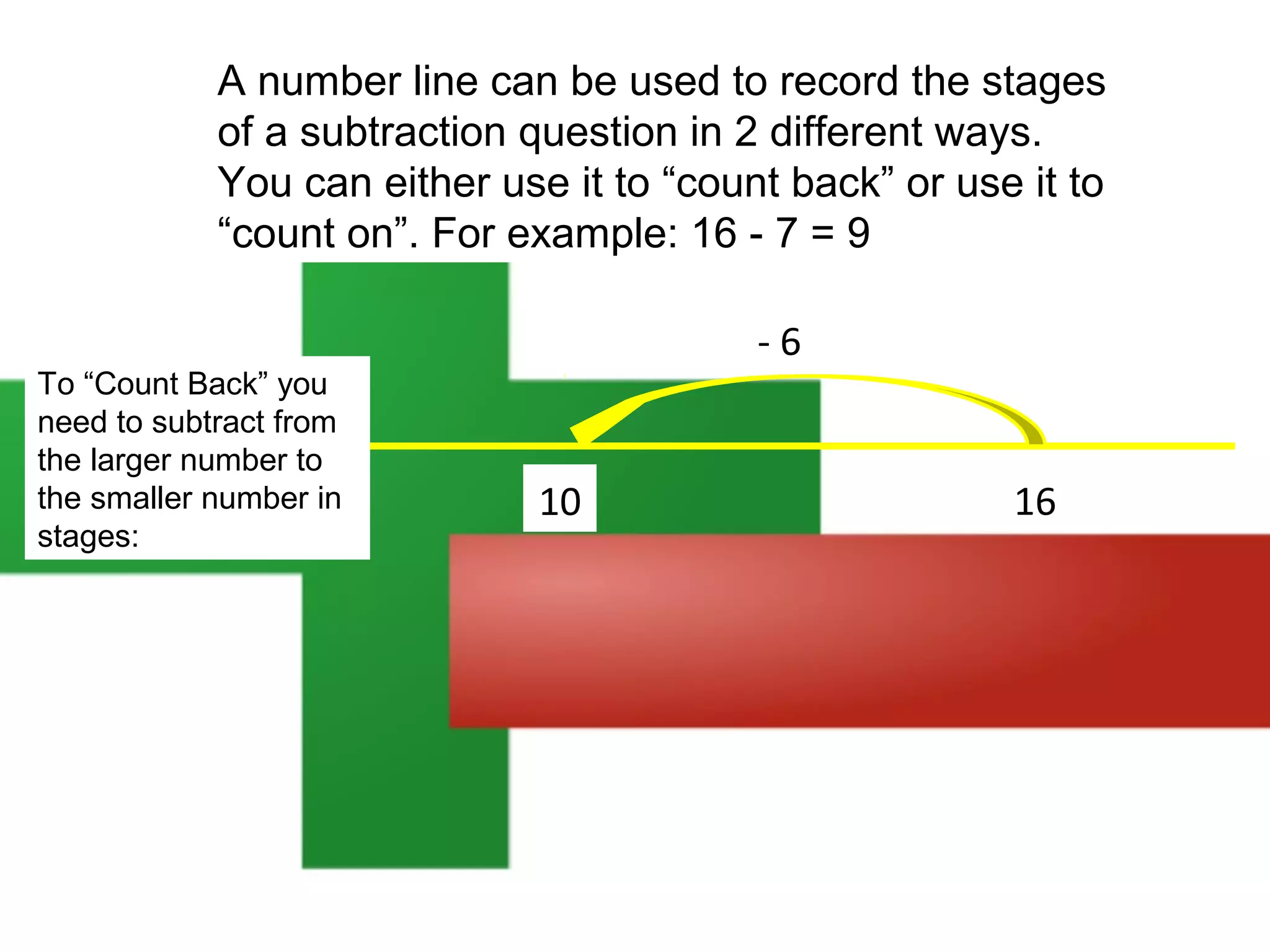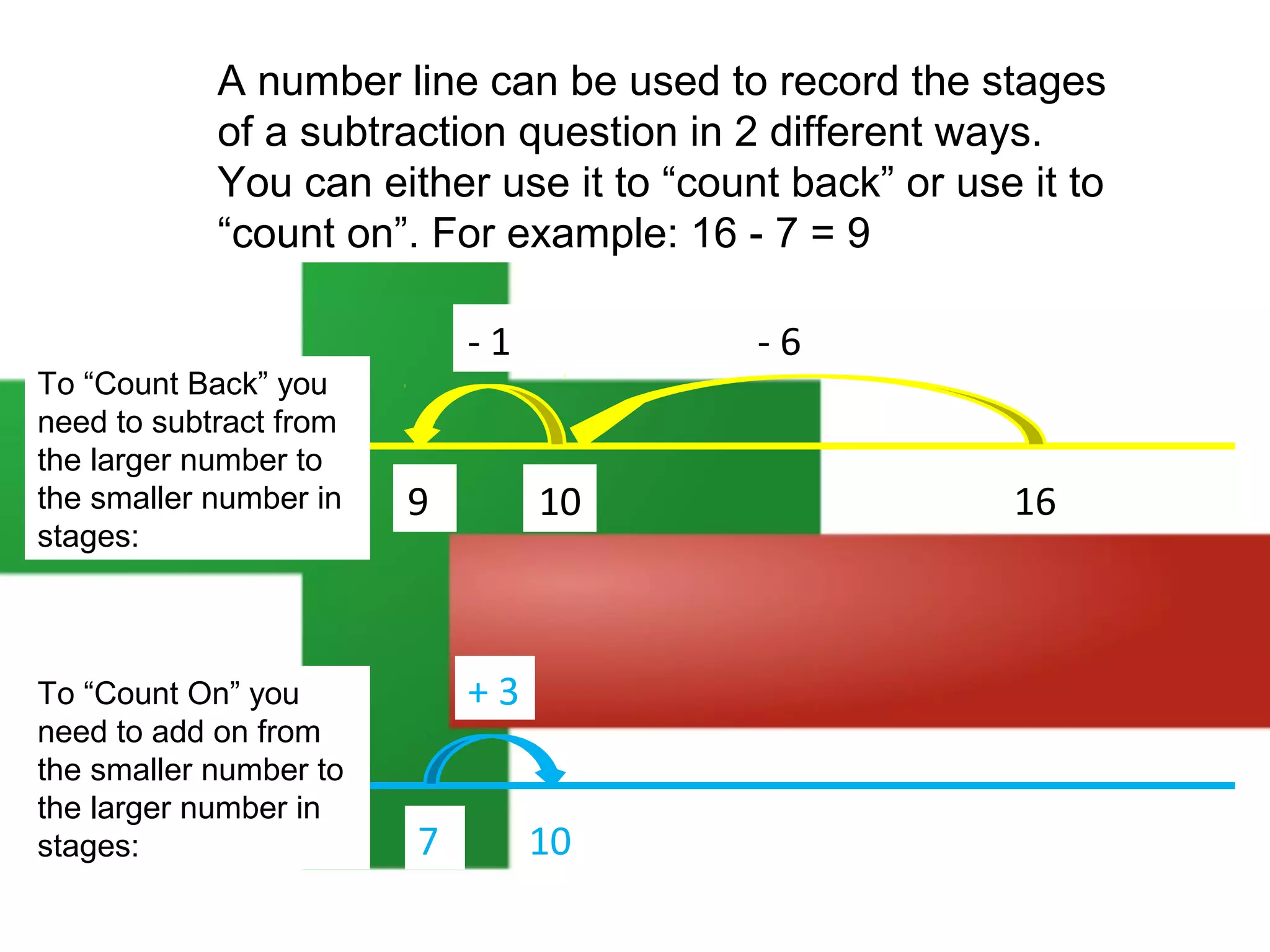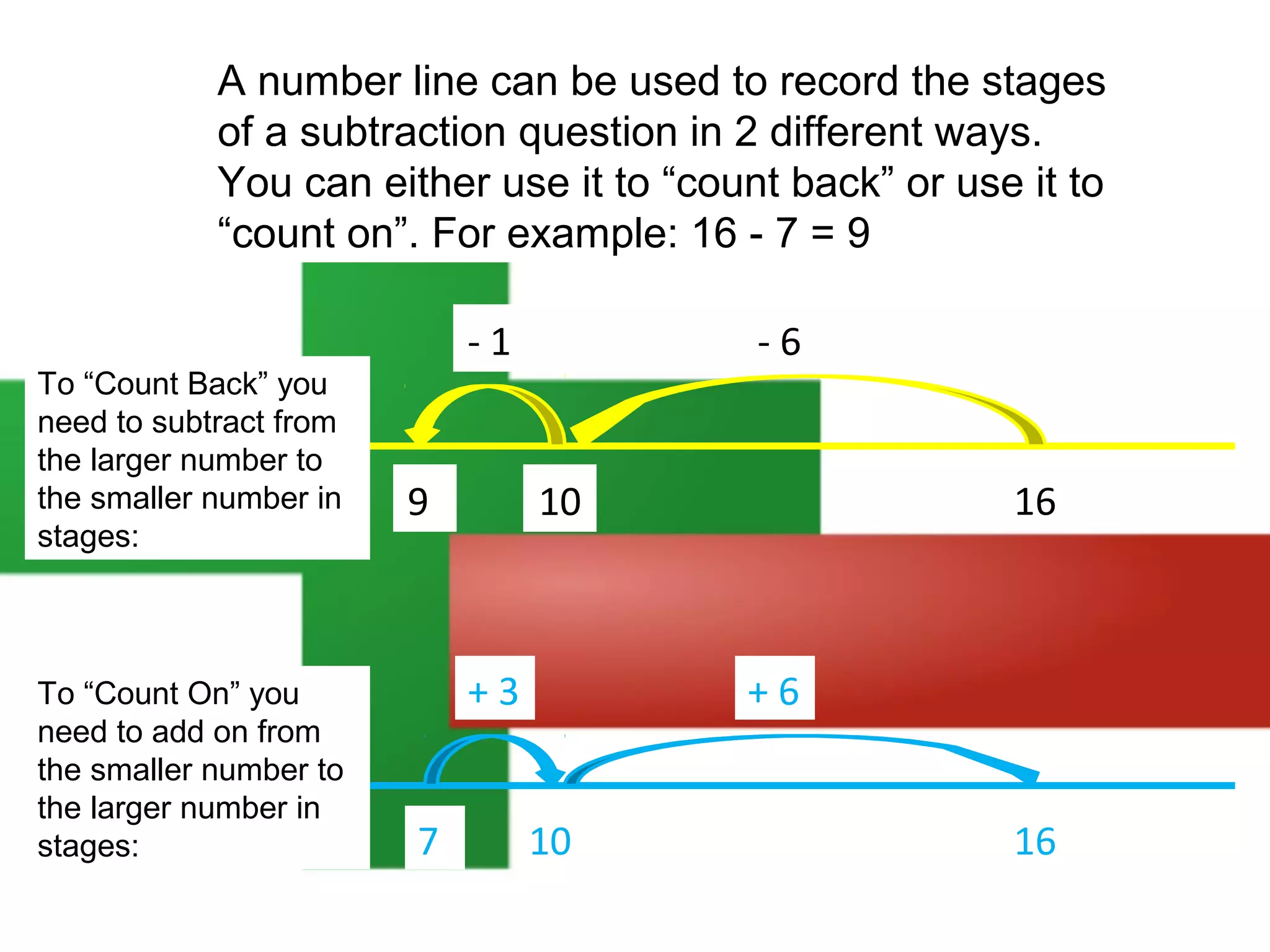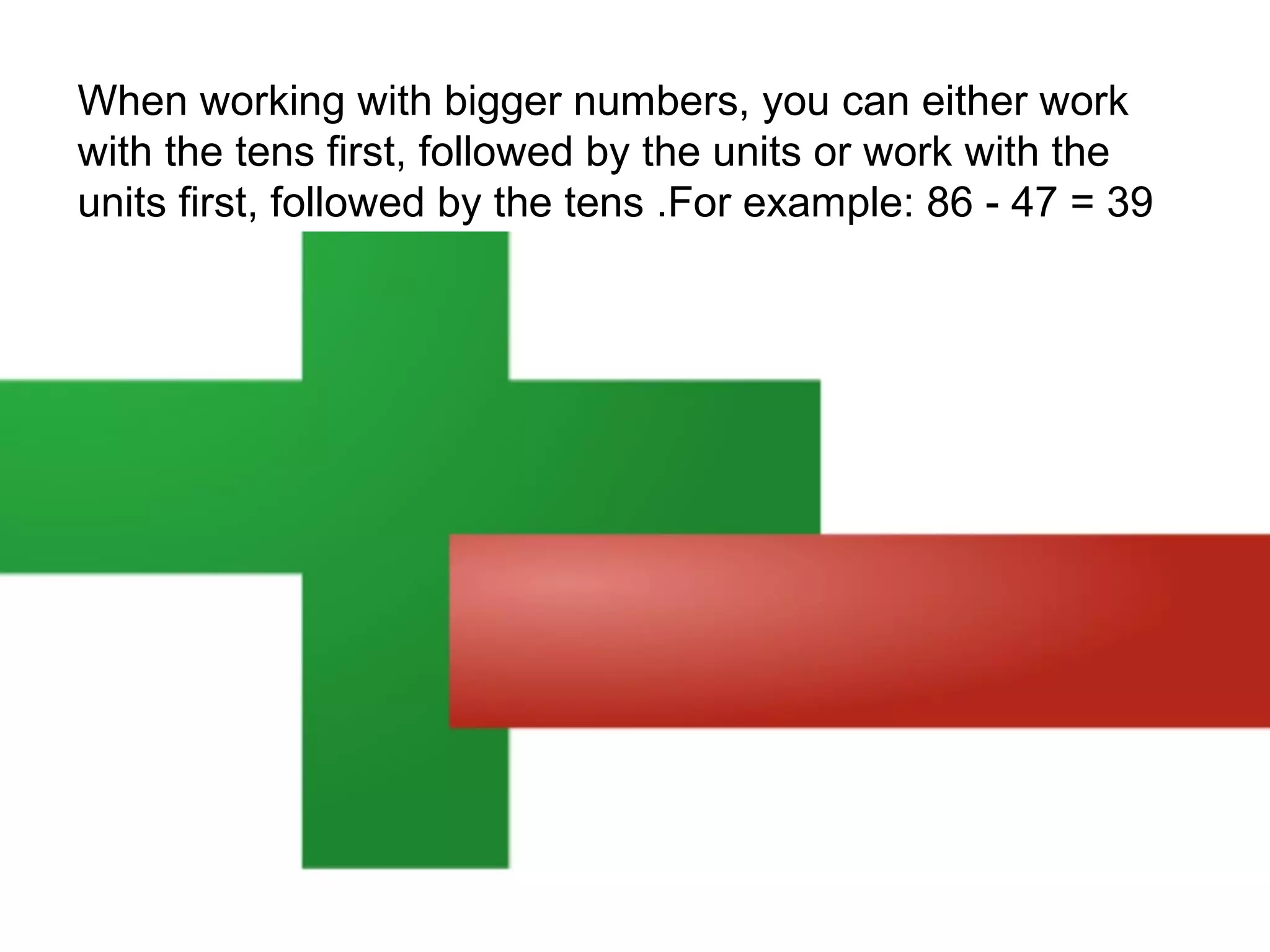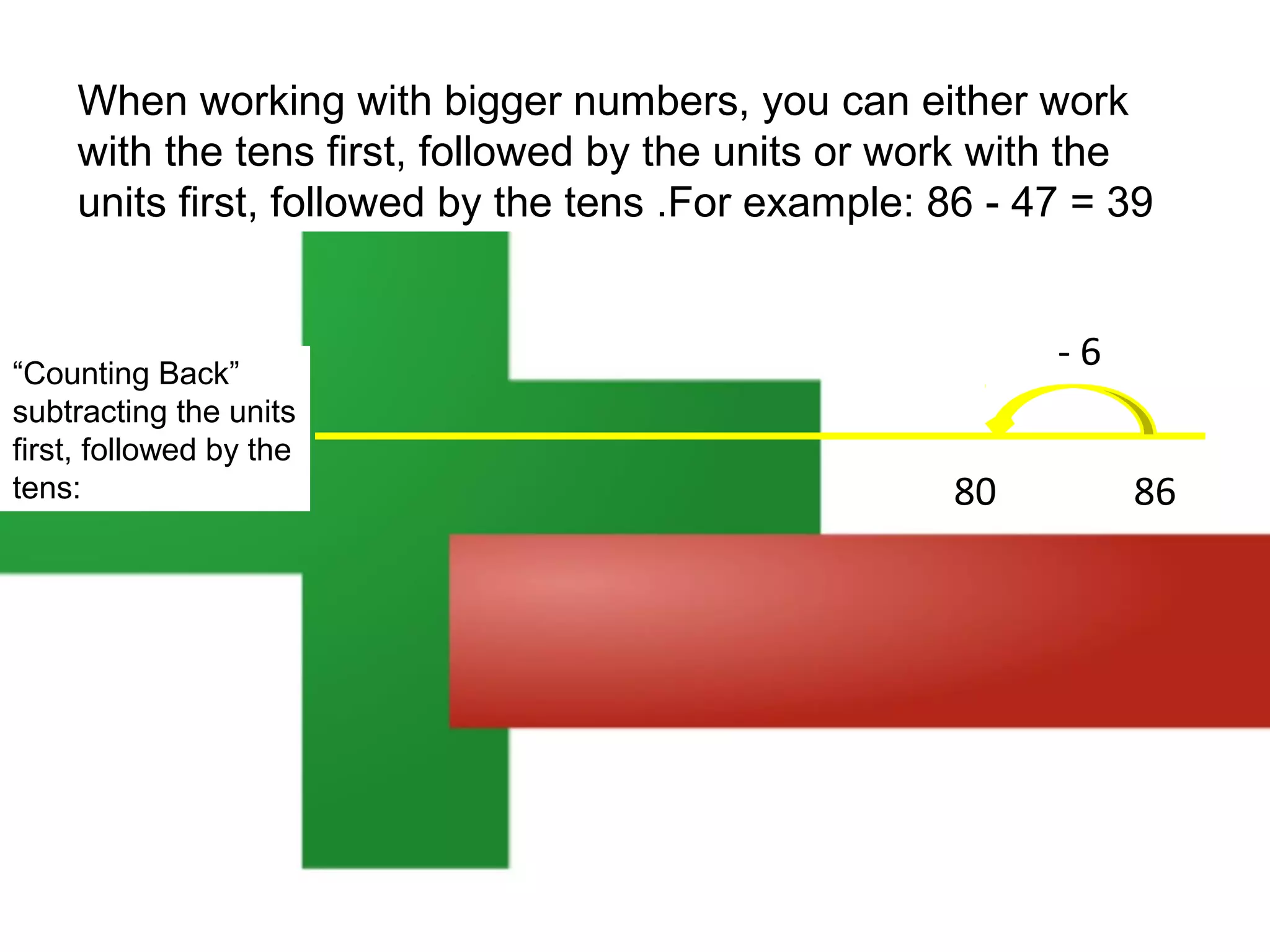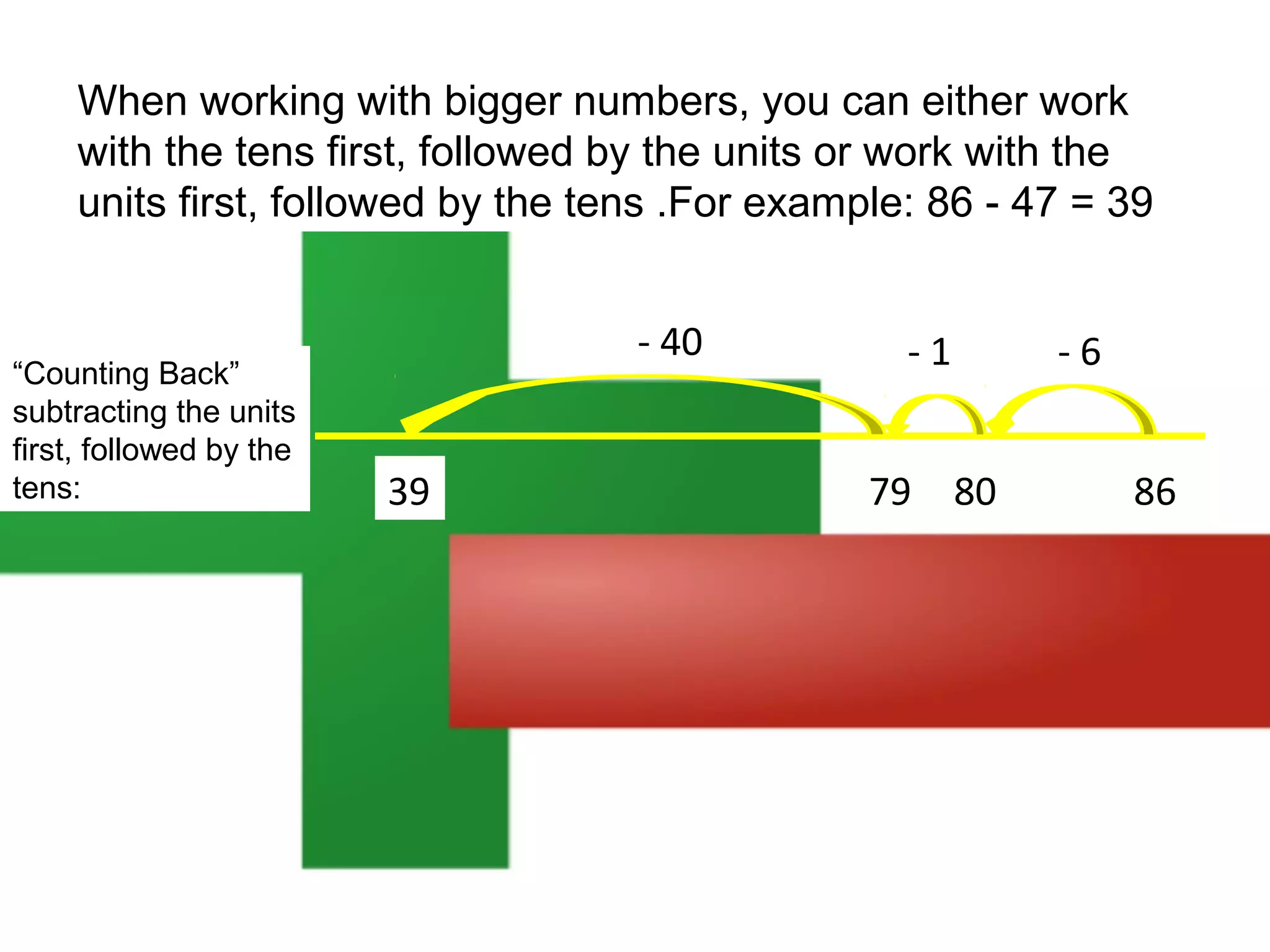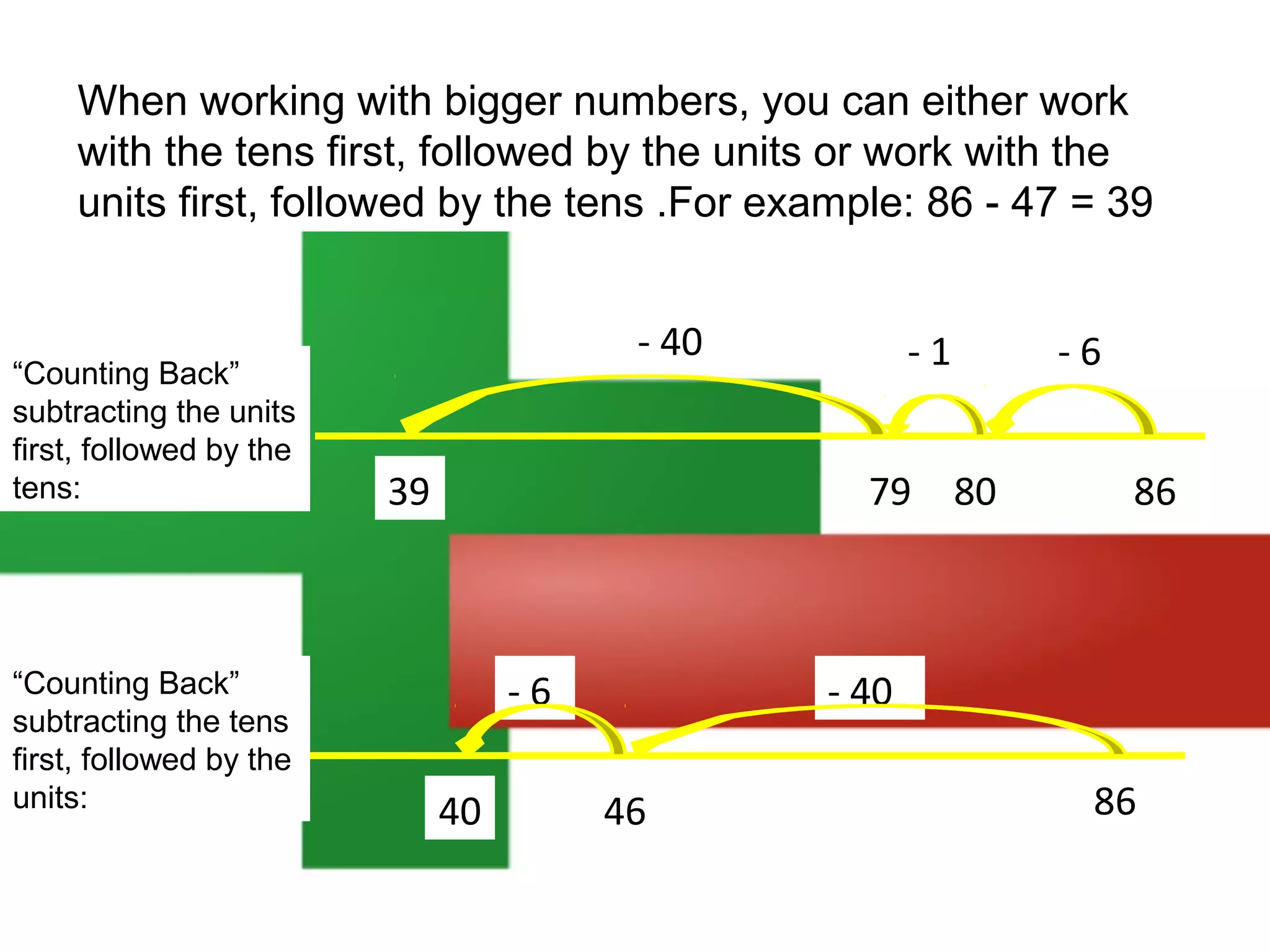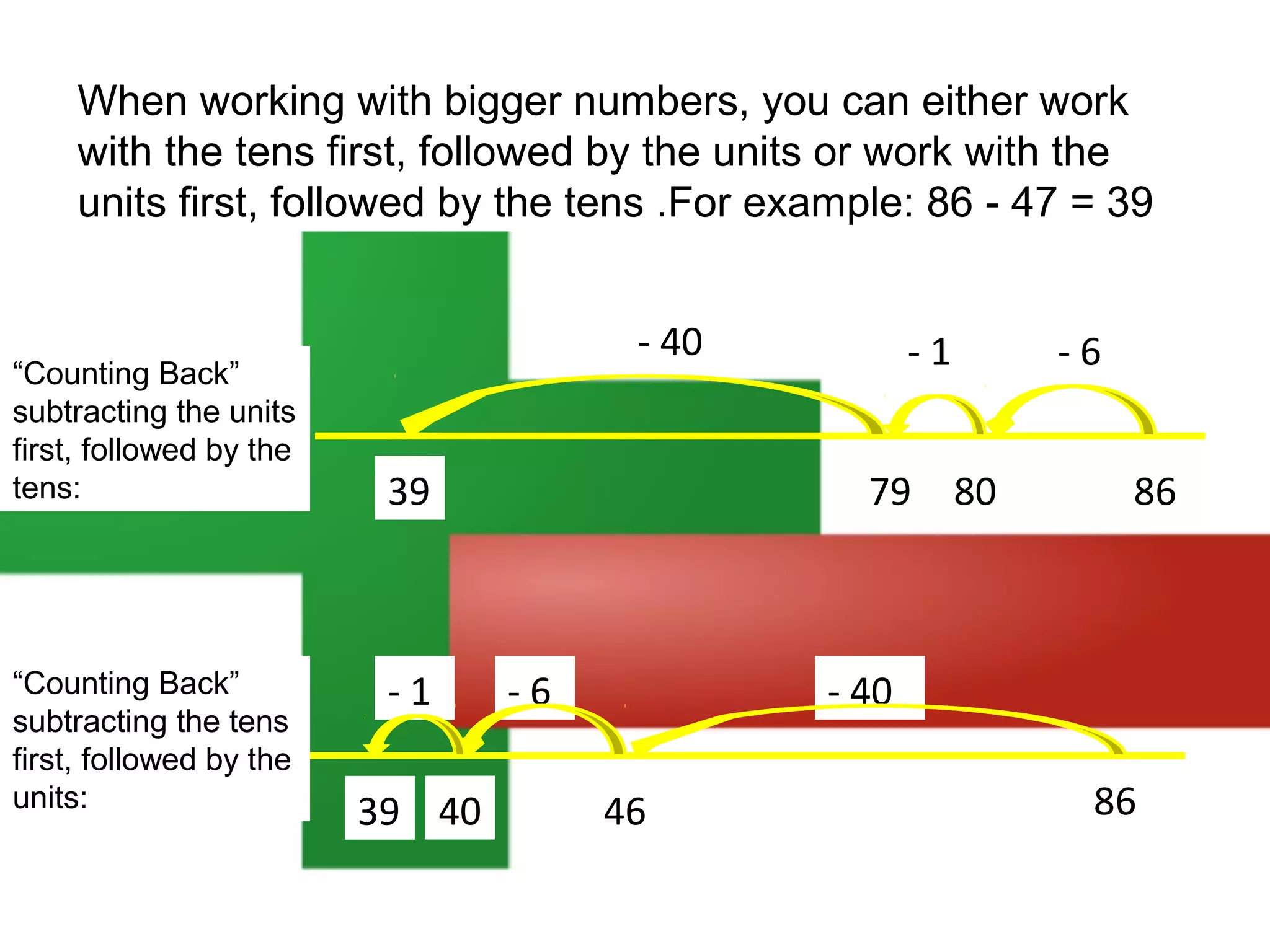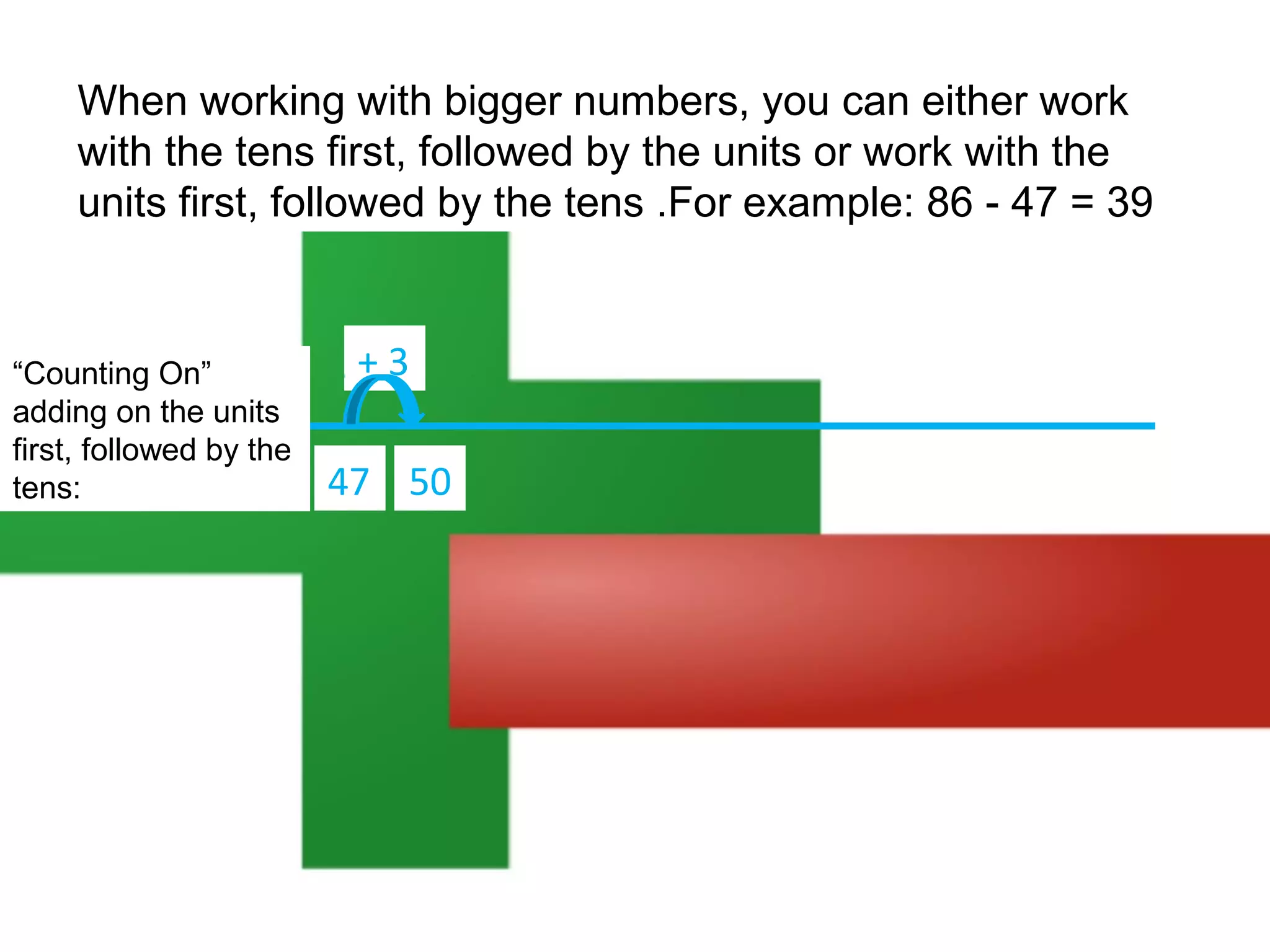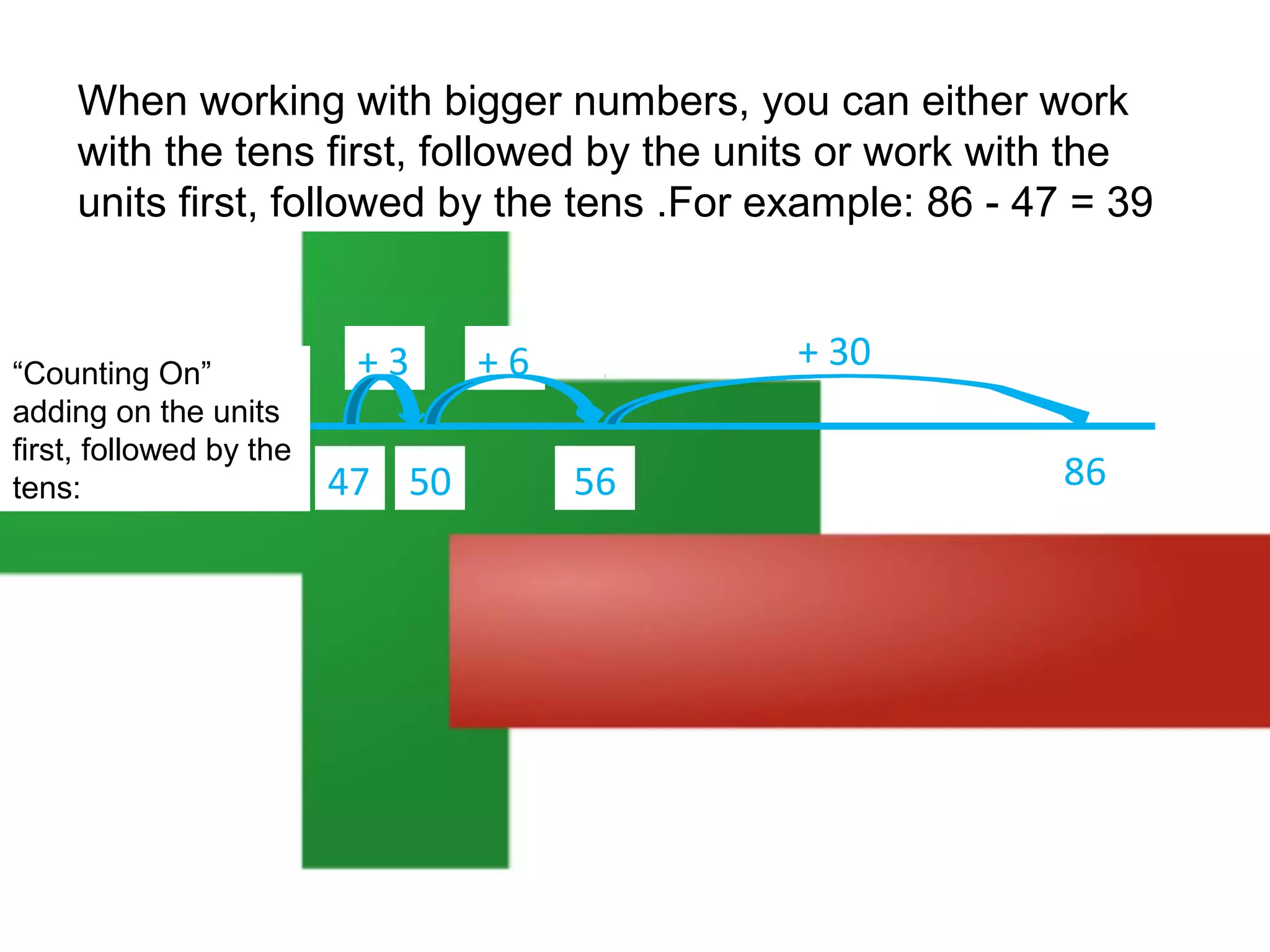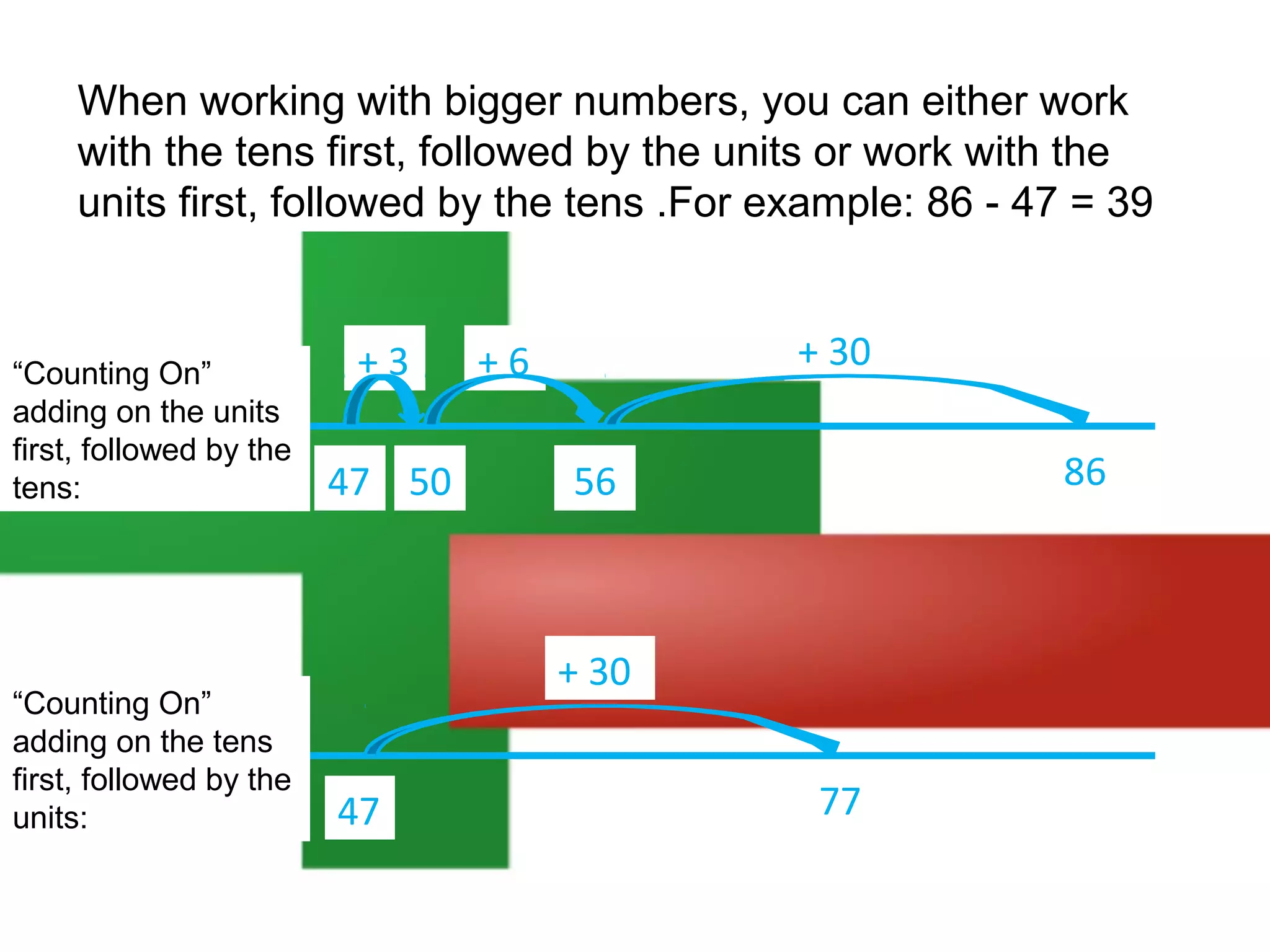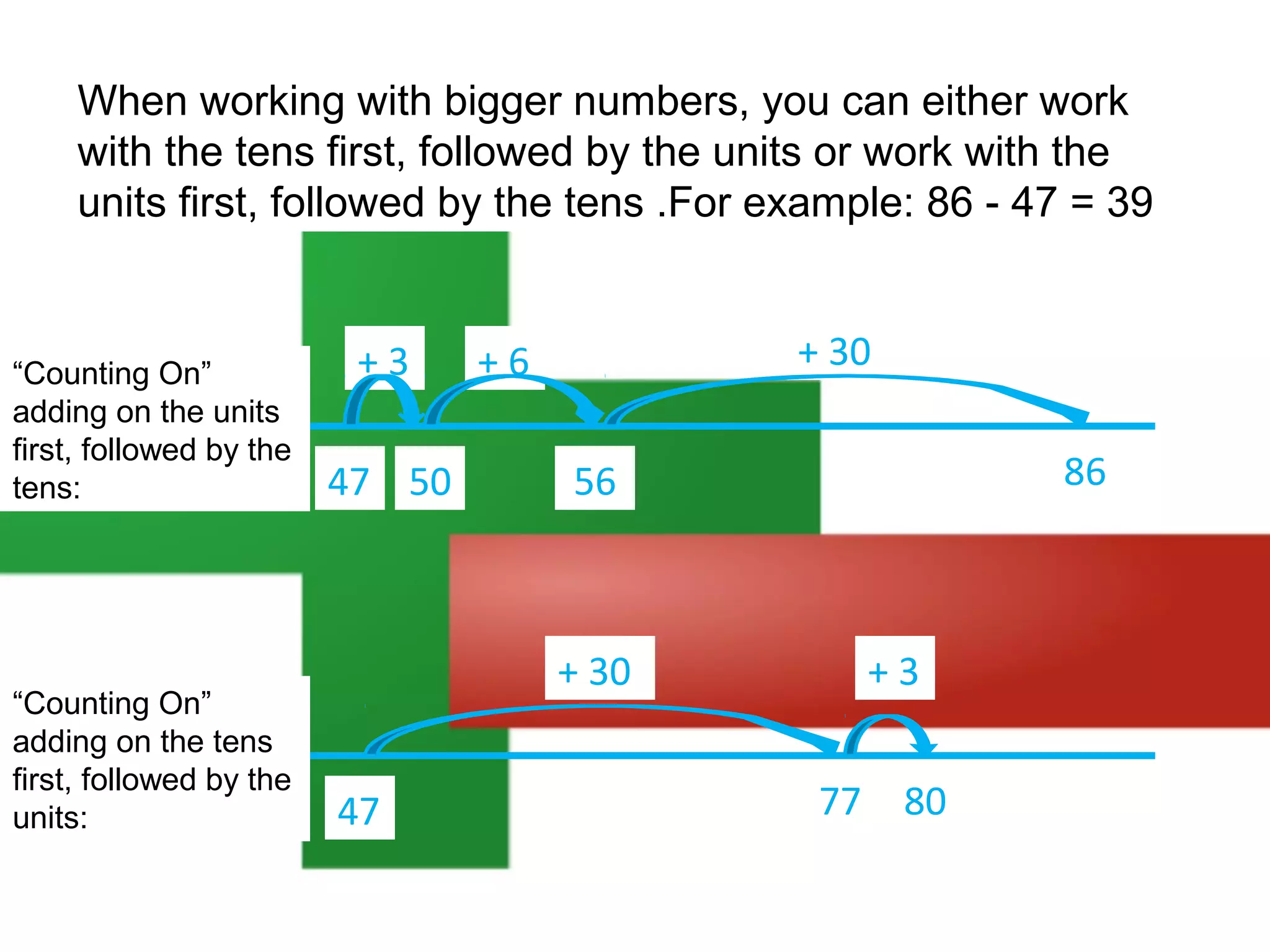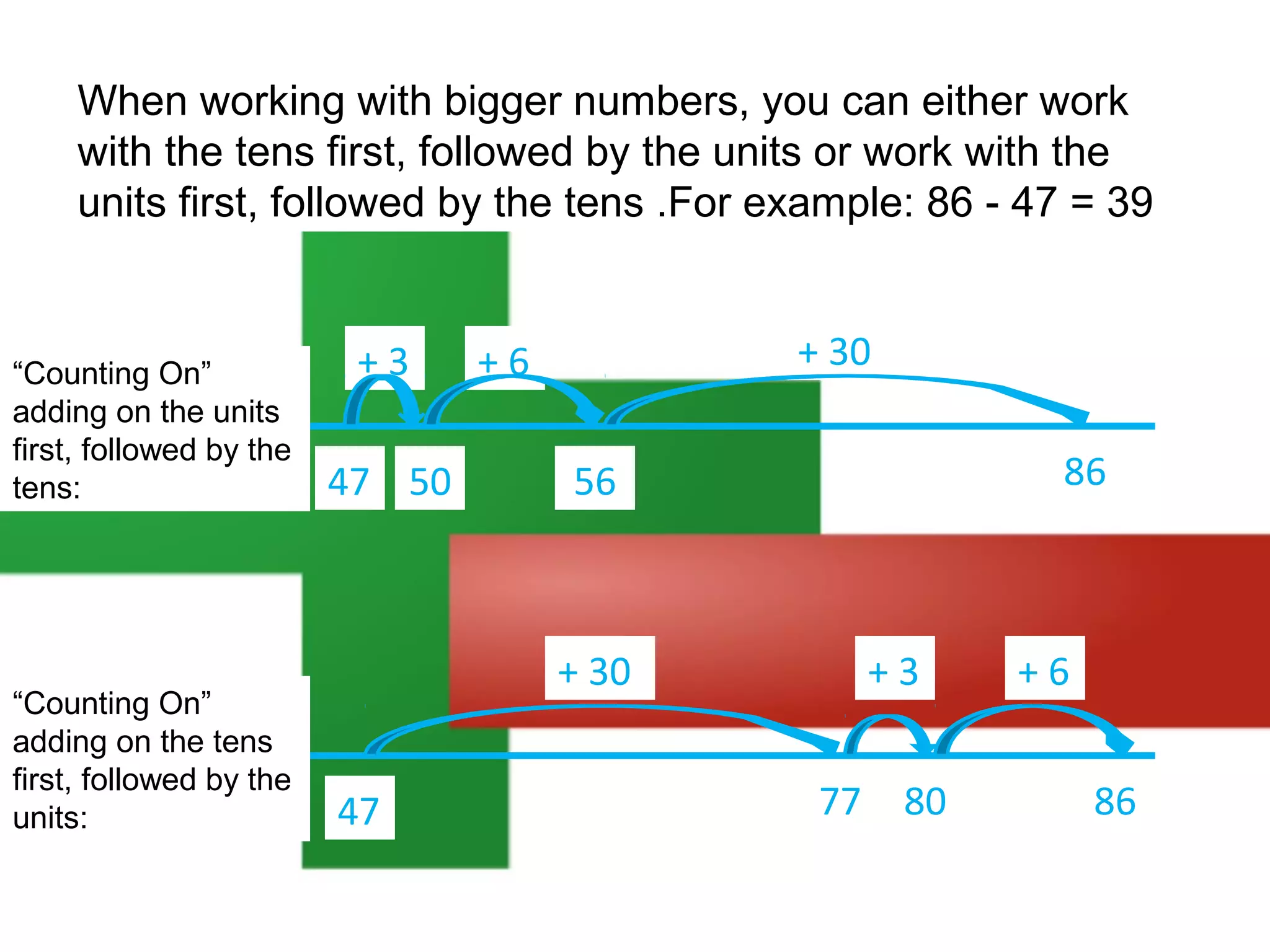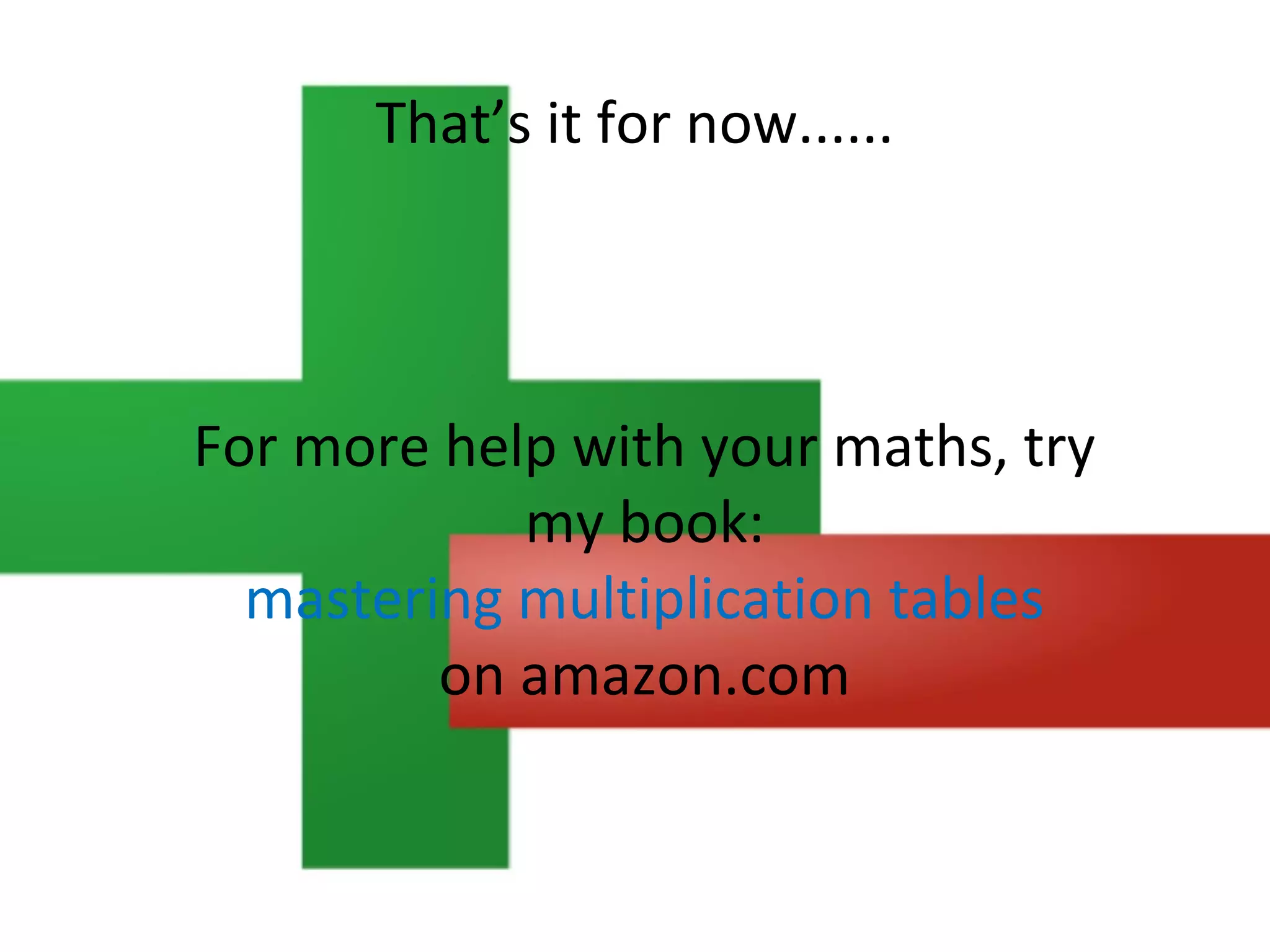The document discusses using a number line to subtract whole numbers. It explains that a number line can be used to subtract either by counting back, which involves subtracting the numbers in stages moving from the larger to the smaller number, or by counting on, which involves adding the numbers in stages moving from the smaller to the larger number. It provides examples of using counting back and counting on to solve 16 - 7. It also discusses subtracting larger numbers by either working with the tens place value first then the ones, or vice versa.
